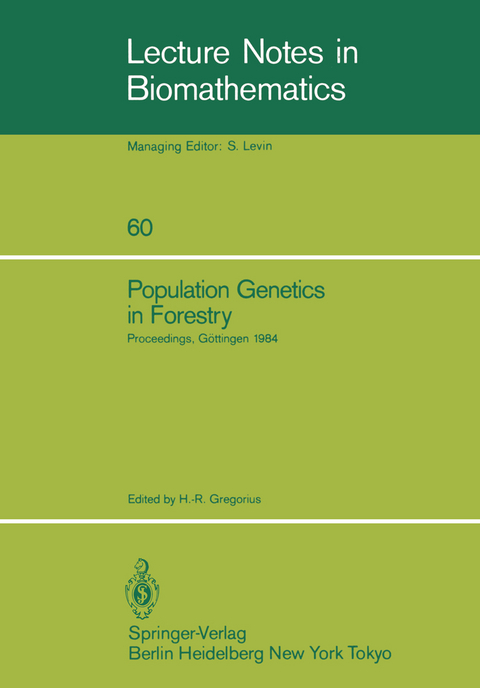
Population Genetics in Forestry
Springer Berlin (Verlag)
978-3-540-15980-3 (ISBN)
I Tree Breeding.- invited guest lecture: The Population Genetic Basis of Breeding Theory.- Hybridisation and Cytogenetics of European Birches.- II Mating Systems.- invited guest lecture: Mating System Estimation in Forest Trees: Models, Methods and Meanings.- invited guest lecture: Understanding the Genetic Structure of Plant Populations: Some Old Problems and a New Approach.- invited guest lecture: Inbreeding and Selection in Natural Populations.- Polymorphic Equilibria Under Inbreeding Effects and Selection on Components of Reproduction.- Mating System Dynamics in a Scots Pine Seed Orchard.- Reproductive Success of Genotypes of Pinus sylves-tris L. in Different Environments.- Multilocus Analysis of External Pollen Contamination of a Scots Pine (Pinus sylvestris L.) Seed Orchard.- Gene Dispersion and Selfing Frequency in a Seed-Tree Stand of Pinus sylvestris (L.) 1.- invited guest lecture: Genetic Constraints on the Evolution of Plant Reproductive Systems.- invited guest lecture: Evolution of Outbreeding Systems.- III Genetic Differentiation Within and Between Populations.- The Effects of Forest Management on the Genetic Variability of Plant Species in the Herb Layer.- Studies on Breeding Structure in Two Tropical Tree Species.- A Multilocus Study of Natural Populations of Pinus sylvestris.- Genetic Effects of Scots Pine (Pinus sylvestris L.) Domestication.- Genetic Differentiation Among Scots Pine Populations From the Lowlands and the Mountains in Poland.- Effects of Selection Pressure by SO2 Pollution on Genetic Structures of Norway Spruce (Picea abies).- Measurement of Genetic Differentiation in Plant Populations.- List of contributors.
| Erscheint lt. Verlag | 1.10.1985 |
|---|---|
| Reihe/Serie | Lecture Notes in Biomathematics |
| Zusatzinfo | VI, 292 p. |
| Verlagsort | Berlin |
| Sprache | englisch |
| Maße | 170 x 244 mm |
| Gewicht | 500 g |
| Themenwelt | Mathematik / Informatik ► Mathematik ► Algebra |
| Naturwissenschaften ► Biologie ► Ökologie / Naturschutz | |
| Weitere Fachgebiete ► Land- / Forstwirtschaft / Fischerei | |
| Schlagworte | brain • Dynamics • forestry • Genetics • Population |
| ISBN-10 | 3-540-15980-0 / 3540159800 |
| ISBN-13 | 978-3-540-15980-3 / 9783540159803 |
| Zustand | Neuware |
| Informationen gemäß Produktsicherheitsverordnung (GPSR) | |
| Haben Sie eine Frage zum Produkt? |
aus dem Bereich


